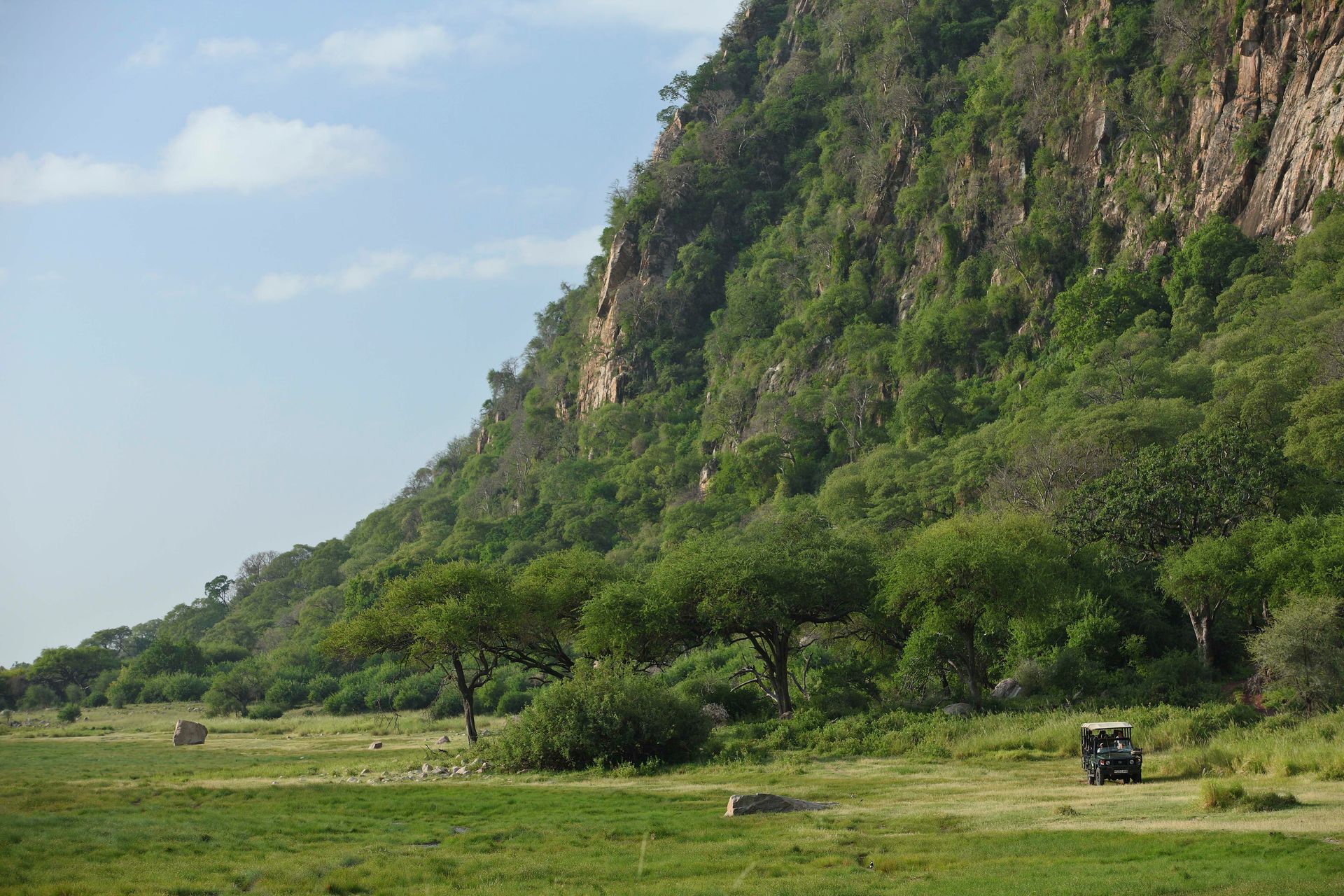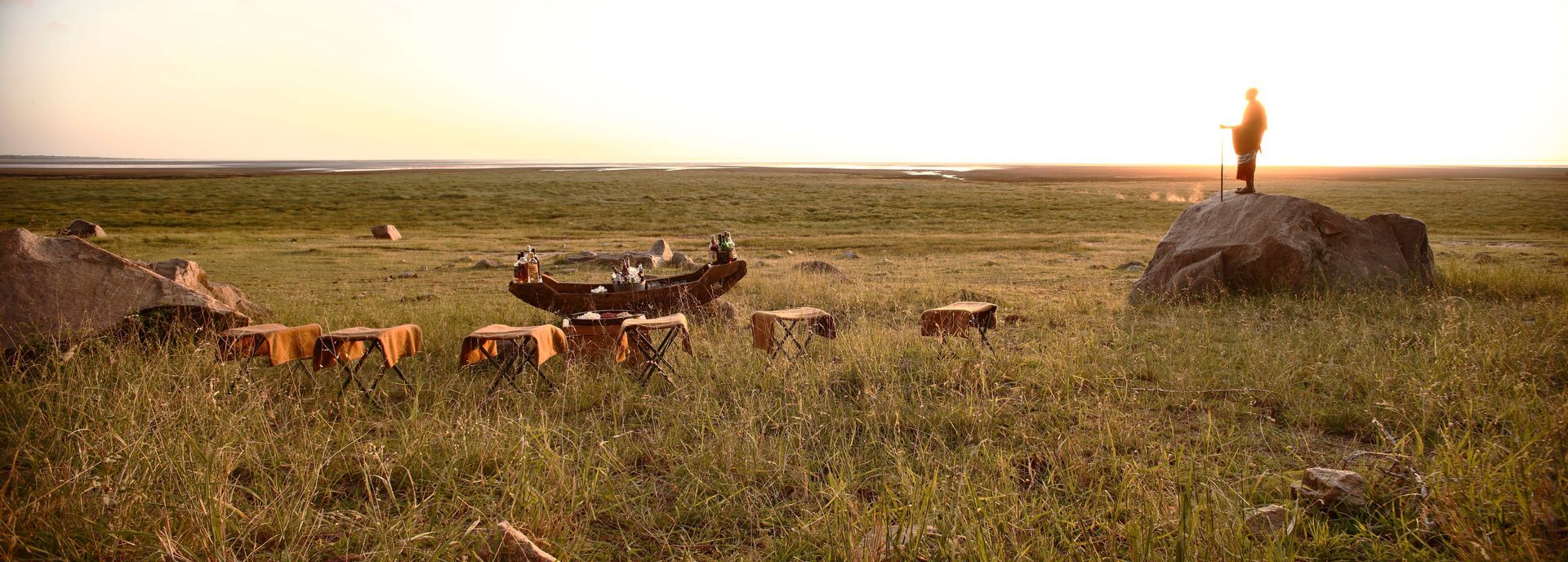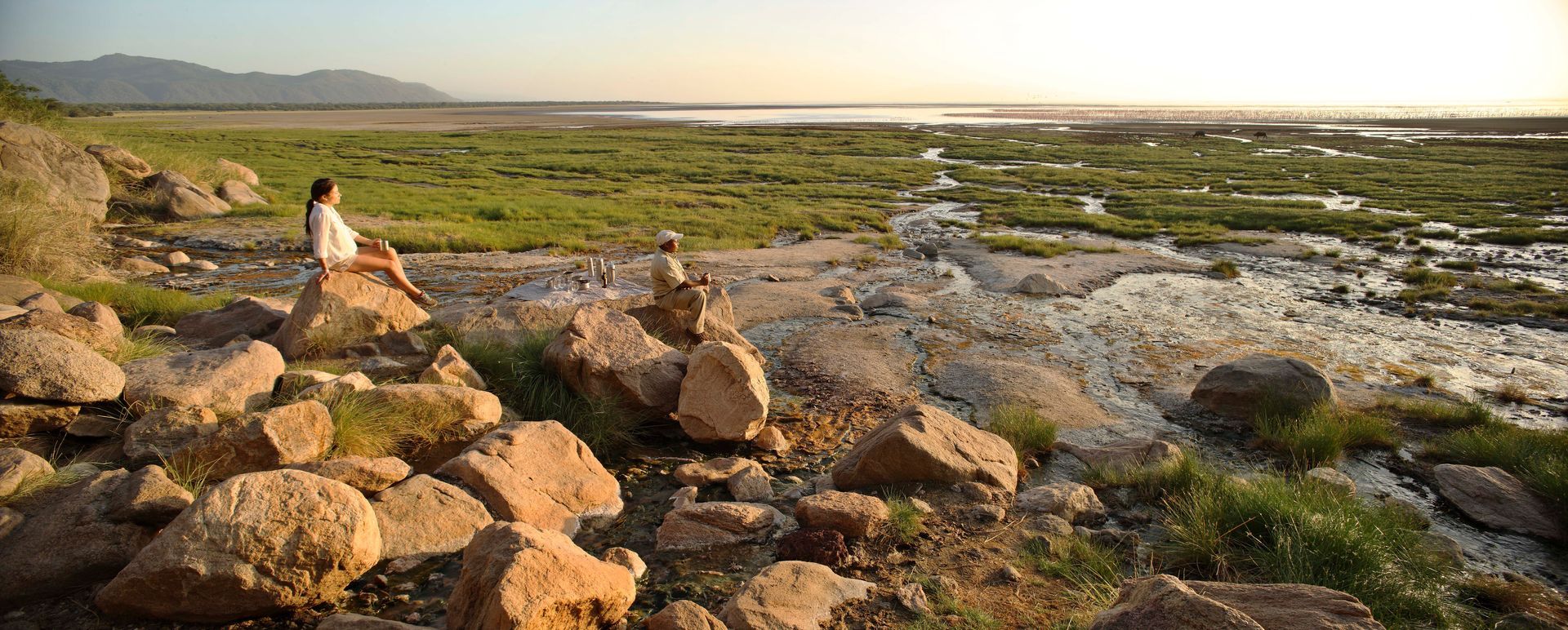A HIDDEN GEM BENEATH THE ESCARPMENT
Why Lake Manyara National Park deserves a spot on your Tanzania safari
Often overshadowed by the much bigger wilderness areas of the Serengeti and Ngorongoro Crater, Lake Manyara National Park offers a rich, varied safari experience that defies its compact size. Stretching between the dramatic cliffs of the Great Rift Valley and the alkaline waters of its namesake lake, this park is a study in contrasts...
Forested groundwater springs give way to golden savannah and acacia woodland, while the shimmering lake attracts thousands of flamingos, pelicans, and other waterbirds. This is Lake Manyara National Park - one of Tanzania's best-loved destinations.
Elephants stride through fig and mahogany trees, baboons scamper across the road in family groups, and lions laze in tree limbs high above the ground. For those willing to slow down and look a little closer, Lake Manyara reveals its secrets in moments of unexpected magic.
It's a small park with a big personality and offers a complete and immersive safari experience within just 330 square kilometres, making it the perfect introduction or final flourish to a longer journey through northern Tanzania. For many travellers, it’s a place of surprises — a park that quietly delivers intimate sightings, rare species, and dramatic landscapes without the crowds.
The entrance to the park is through a lush groundwater forest — dense, green, and cool even in the dry season. It’s here that the park’s elephants are often found browsing beneath towering fig and mahogany trees. These elephants are notably relaxed, a result of the park’s long-standing focus on low-impact tourism. Baboons, too, dominate this section of the park, with one of the largest and most visible troops in East Africa, often numbering in the hundreds.
Beyond the forest, the landscape opens up to grassy floodplains where giraffes and buffalo roam, and to pockets of acacia woodland where tree-climbing lions have become something of a legend. While not guaranteed, sightings of lions draped along tree branches have become a hallmark of Lake Manyara, and a sought-after photograph for those lucky enough to see them.
But it’s the birdlife that elevates Lake Manyara to something truly special. With more than 400 species recorded, it’s a haven for twitchers and casual birders alike. Flamingos, great white pelicans, spoonbills, storks, and herons gather in the shallows, while the dense forest offers sightings of Narina trogons, crowned hornbills, and silvery-cheeked hornbills. Raptors like the palm-nut vulture and African fish eagle circle overhead. The park’s diversity of habitats makes it one of the most rewarding birding destinations in the region.
Lake Manyara is also one of the few national parks in Tanzania where night drives are permitted, offering a rare opportunity to witness nocturnal species such as bush babies, genets, civets, and hyenas. This experience, usually only available in private concessions, adds another layer of depth to the Manyara experience — a chance to hear the bush breathe differently under the cover of darkness.
The park is easily accessed from Arusha and pairs beautifully with Tarangire, Ngorongoro, and the Serengeti for a comprehensive northern circuit safari. Yet it often flies under the radar, which means fewer vehicles, more peaceful sightings, and a chance to reconnect with the quieter rhythms of the wild.
For guests travelling with Leadwood Holidays, Lake Manyara is more than just a scenic stop. It’s a reminder that Tanzania’s magic doesn’t always come in wide-open plains and roaring river crossings — sometimes it comes in the stillness of a flamingo-strewn lake, or in the gentle rustle of elephant feet on forest paths.
Chat to us to find out more and let's discuss your safari options.













